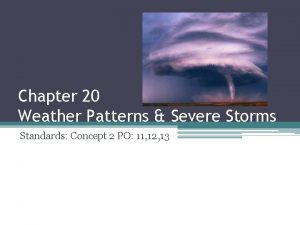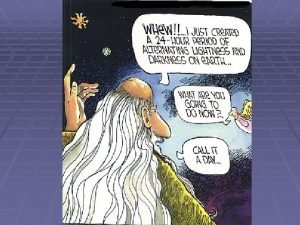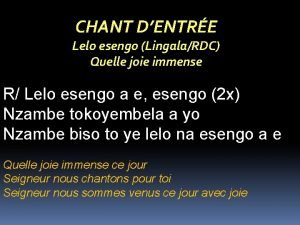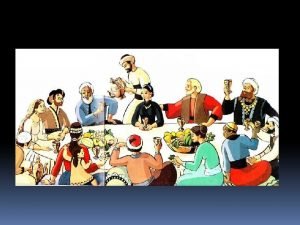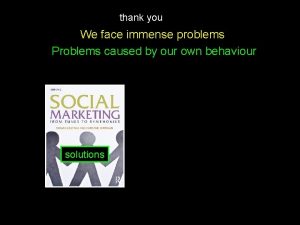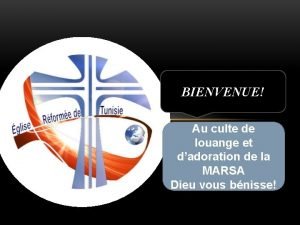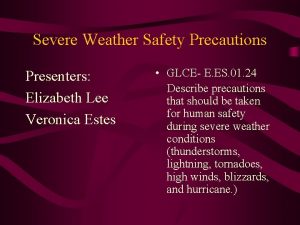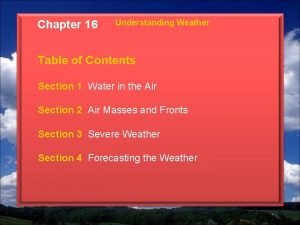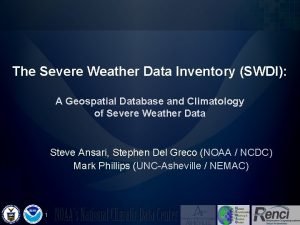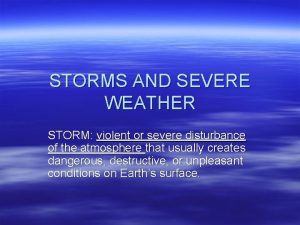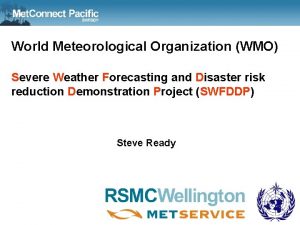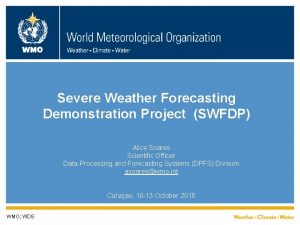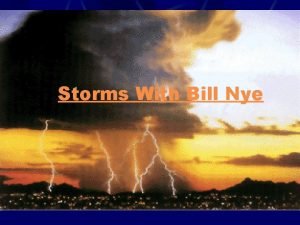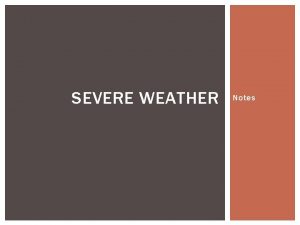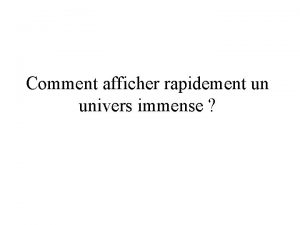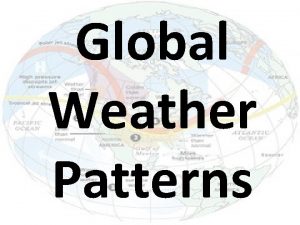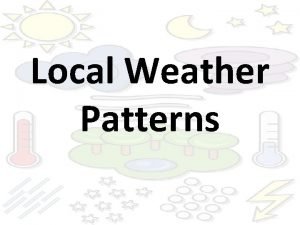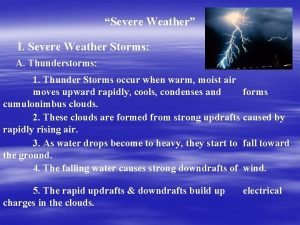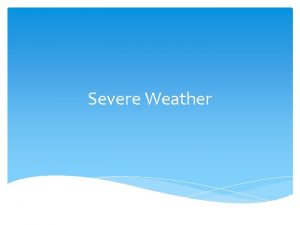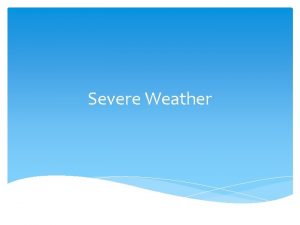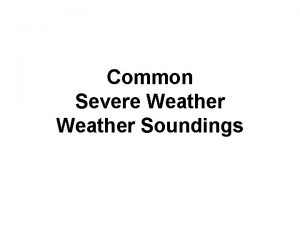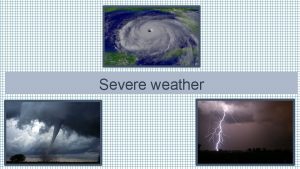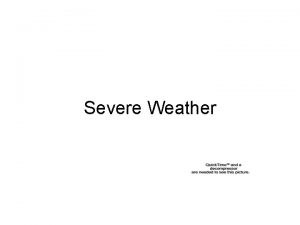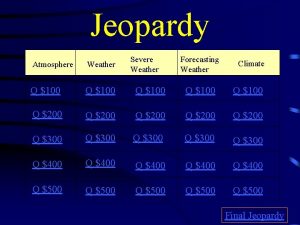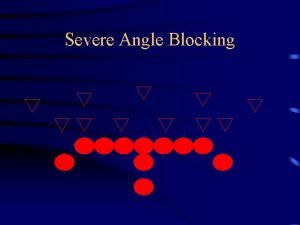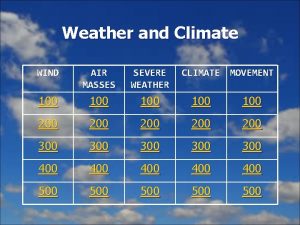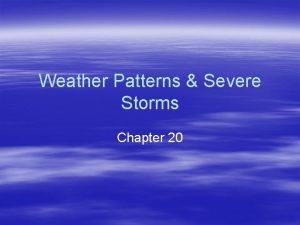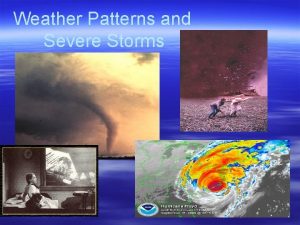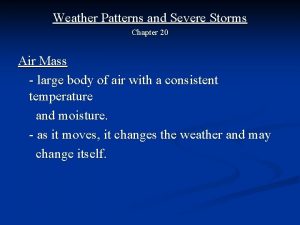CH 20 Patterns Severe Weather AIR MASSESare immense



















- Slides: 19

CH 20 Patterns & Severe Weather • AIR MASSES—are immense bodies of air. • Air Masses—are characterized by 2 things: 1. Temperature 2. Moisture Content They can be 1600 km (1000 miles) across!

4 Air mass letter symbols: • • (P) = polar, cool or cold (T) = tropical, warm or hot (c) = continental, land = dry (m) = maritime, ocean = moist • Choose 1 from P or T & 1 from c or m.


• What air mass usually brings us precip. ? • What 2 nd air mass affects Asheville? • What air mass affects the northwest? • What air mass causes lake effect snow? • What air mass causes Indian Summers?

`20. 2 FRONTS = are boundaries between 2 air masses! • Fronts are much narrower than air masses—usually 15 -200 km wide. • 4 TYPES OF FRONTS:

1. • • WARM FRONTS Warmer air moves into area of cooler air Symbol red line with semi-circles Gently sloped boundary & move slow Steady (long-term) light to moderate precipitation & warmer temperatures. • Cloud sequence—cirrus, cirrostratus, alto stratus, & then nimbostratus.

`2. COLD FRONTS • • Colder air moves into area of warmer air Symbol blue line with triangles Steeper sloped & move fast Heavy (short-term) precipitation, even severe thunderstorms or tornadoes • Cloud sequence—cumulus begin to vertically develop into cumulonimbus = anvil head clouds!

3. STATIONARY FRONTS • Movement is parallel to the line of the front. (no forward movement) • Surface position does not move • Symbol is blue triangle on one side and red semi-circles on the other side • Weather is similar to a warm front but usually last even longer!

`4. OCCLUDED FRONTS • Occur when an active (fast) cold front overtakes a warm front. • Symbol is either purple triangles & semi -circles or just purple semi-circles on the same side of the line • Weather is (at first) similar to a cold front and then ends up lasting longer with a steady rain.

Mid-Latitude Cyclones! • M-L C. are the main stormy weather producers for the United States. • M-L C. are large low pressure centers. • 6 Formation Steps: (page 569)

` • 1. Formation of a stationary front. • 2. Wave shape (indentation) forms. • 3. Counterclockwise flow (separation of front into 2 fronts (cold & warm). • 4. Cold front catches up to warm front & an occluded front forms. • 5. You now have 3 fronts. • 6. The low or cyclone weakens.


20. 3 Severe Weather!!!

Thunderstorms • Static electricity forms in cumulonimbus clouds. • High winds, hail, heavy rains, L & T. • Lightning bolt starts from ground goes up. • 5 -6 times hotter than sun. • One inch in diameter.

Tornadoes • • • Season is in spring & summer. Tornado alley—c. P & m. T clash. Unstable air—forms mesocyclone Doppler Radar- or visual. Fujita scale F 0 -F 5 Small intense storms, usually last for short time.

Hurricanes • • Season is in late summer & fall. Occur where water is warm. Form from tropical storms. Alternate male & female names. Some names (Katrina) retired. Saffir-Simpson scale Category 1 -5 Storm surge, winds, & flooding.

Sandy Oct. 2012

Katrina August 2005 Over 1, 800 people dead

Hurricane Floyd September 1999 • 52 deaths and 8, 000 homes destroyed
 Chapter 20 weather patterns and severe storms
Chapter 20 weather patterns and severe storms Chapter 20 weather patterns and severe storms
Chapter 20 weather patterns and severe storms Un merveilleux sauveur est christ mon seigneur lyrics
Un merveilleux sauveur est christ mon seigneur lyrics God is immense
God is immense Quelle joie immense
Quelle joie immense Chant je suis dans la joie
Chant je suis dans la joie Eskisihir
Eskisihir Quinlink
Quinlink Quand je t'ouvre mon coeur je te vois seigneur
Quand je t'ouvre mon coeur je te vois seigneur Severe weather safety precautions worksheet
Severe weather safety precautions worksheet Chapter 16 section 1 water in the air answer key
Chapter 16 section 1 water in the air answer key Severe weather data inventory
Severe weather data inventory Severe weather graphic organizer
Severe weather graphic organizer Wmo severe weather
Wmo severe weather Wmo severe weather
Wmo severe weather Bill nye storms
Bill nye storms Pt tanah air sentosa
Pt tanah air sentosa Weather station model symbols
Weather station model symbols Whether the weather be cold
Whether the weather be cold Clothes poem
Clothes poem

